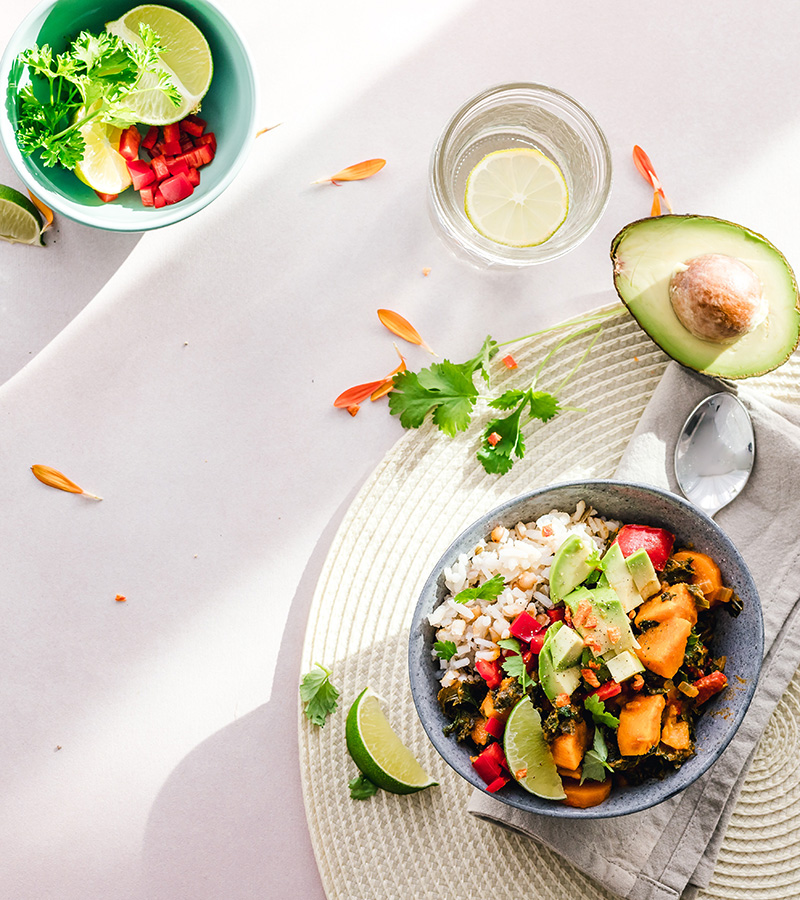In summer, free time is to be enjoyed and nobody likes to spend it in front of the cooker, that’s why we opt for fresh and quick to prepare recipes, without renouncing, of course, to a healthy and nutritious cuisine.
Cooking is a reflection of our lifestyle at this time of year and we can continue to take care of ourselves with delicious and easy-to-prepare recipes. That is why we recommend three recipes to combine with our two Blume varieties: Verdejo, Verdejo Selección and Sauvignon Blanc.
We start with a cold and refreshing soup:
Cucumber, yoghurt and mint cream
For two people we need:
2 small cucumbers, 1 Greek yoghurt, half a spring onion, half a clove of garlic, a pinch of salt, a dash of apple cider vinegar, a pinch of ground black pepper, a dash of extra virgin olive oil, a few leaves of fresh mint, a bottle of Blume Verdejo Selección
The recipe is as simple as chopping the vegetables and adding them to a blender. Add the vinegar, pepper, olive oil and fresh mint. Finally add the yoghurt and whisk again. Refrigerate and add the mint for garnish.
*Note: if it is too thick, it can be thinned with water.
Uncork your bottle of Blume Verdejo Selección and enjoy the freshness of the cold cream and the aromas and notes of dill and hay of our DO Rueda wine.
Grilled squid with pesto and mozzarella mille-feuille Capresse
2 medium-sized cleaned squid, 1 tomato, 1 ball of fresh mozzarella, basil, almonds, sesame seeds to taste, a dash of extra virgin olive oil, a pinch of salt and a bottle of Blume Sauvignon Blanc.
Wash the squid and remove the water by blotting with kitchen paper. Heat the frying pan and when hot, grill them for 3 minutes on each side.
In a blender, add the basil leaves, almonds, olive oil and a pinch of salt. Blend until you get the texture of pesto.
Thinly slice the tomato, cucumber and mozzarella.
Arrange on the plate by combining a slice of tomato, a slice of mozzarella, a slice of cucumber, and place a teaspoonful of pesto sauce on each slice. On the last layer, decorate with sesame and pesto and a drizzle of olive oil.
Use a toothpick to keep it in place. Present the squid next to the mille-feuille. While the recipe is being prepared, keep our Blume Sauvignon Blanc in the fridge. Its light, lively and fruity palate will provide the ideal freshness to accompany the fish.
And finally a dessert:
Cherry ice cream
1 sweetened yoghurt, 500 gr of cherries, chocolate and/or toppings to decorate and a bottle of Blume Verdejo Viura to enjoy.
Pit the cherries and freeze them. Put the yoghurt in the freezer too. When everything is frozen, place in a blender and blend to the consistency of ice cream. Pour into a container and freeze. Serve in small balls with a drizzle of melted chocolate or coloured sugar toppings.
The fresh and light flavours of Blume Verdejo, made from Verdejo and Viura grapes, are ideal to accompany this dish. Serve a glass of our DO Rueda chilled.






